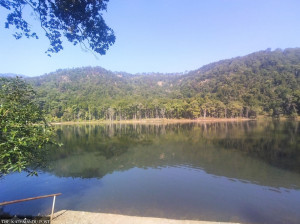Sudurpaschim Province
Dadheldhura locals complain of ‘exorbitant’ taxes
Many locals complain that the rising rate of taxes has taken a toll on their finances.DR Pant
For the last 20 years, Hari Kaini of Amargadhi Municipality traded cattle for a living. He used to purchase cattle in the hills of Dadheldhura and transport them to cities in Tarai to sell them. But last year, he had to stop trading cattle and switch to vegetable farming.
The reason: an exorbitant increase in taxes. He says he feels compelled to abandon his long-time profession. “While transporting cattle from Ajayamaru in Dadheldhura to Kanchanpur, we would be stopped at numerous spots and were asked to pay taxes,” Kaini said. “The tax amount exceeded my profit, and I couldn’t afford it.”
Dharma Tamata of Belapur has a similar story. He used to trade utensils but he quit recently because of the rising amount of tax. “Many of us who trade pots made of copper and brass have quit our professions,” Tamata said. “When you have to give away more than you earn, you have no option but to quit.”
Many locals in Dadheldhura are complaining that the rising rate of taxes has taken a toll on their finances. “There are so many headings under which taxes are collected that it’s hard for us to make a living with what we earn,” Ganesh Bohara, a school teacher based in Amargadhi Municipality, said.
For that matter, the amount of tax and the heading are not similar in two adjacent local units, Bohara said. “The amount of tax is different in two local units under the same heading,” he said. “But we don’t know where the tax amount goes, given the poor condition of infrastructure and facilities.”
Bhageshwar Rural Municipality has a provision to collect a tax of Rs500 for each buffalo migrated from the municipality. But the Ajaymeru Rural Municipality, which lies just across the river from Bhageshwar, has a provision of Rs100 for one buffalo.
“The local units don’t have a fixed criterion under which tax is imposed,” said Bohara. “They impose whatever amount they want to, just like during the baise-chaubise era. It’s hard to know how the tax amount is decided upon.” In the two municipalities, Parashuram and Amargadhi, the latter imposes an exorbitant amount of tax on the same headings where the former doesn’t impose any tax. Karabir Pandey, a local, said that while he used to pay Rs35 as land revenue tax about three years ago. That amount has now risen to Rs700. “When we enquire to the land revenue officials, they give us ambiguous explanations. It’s hard for us to understand why the amount has hiked up,” Pandey said.
Nawadurga Rural Municipality has 18 headings under which it imposes taxes. When asked, the officials at the local unit were reluctant to provide details on the amount of taxes imposed according to headings.
“Most of the taxpayers are unaware under what heading they are paying tax and the authorities are unwilling to simplify,” said Bohara, the schoolteacher. “The tax amounts are exorbitant and locals have been heavily affected.”




 12.12°C Kathmandu
12.12°C Kathmandu












